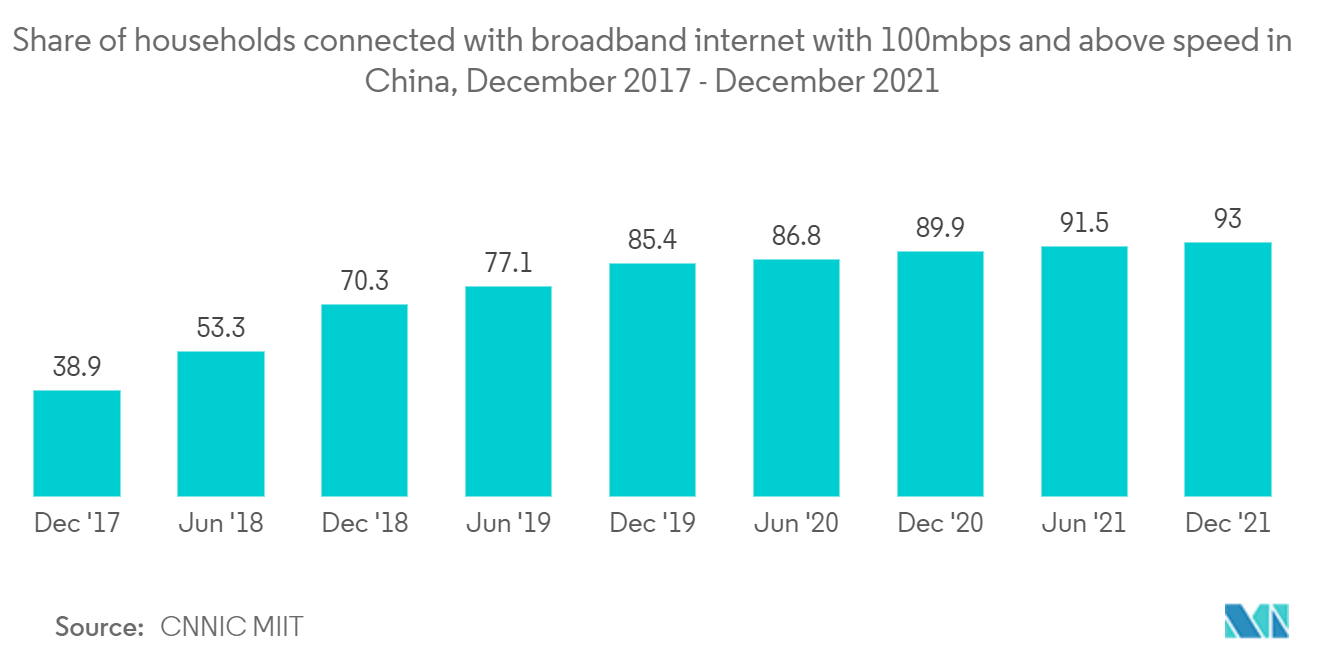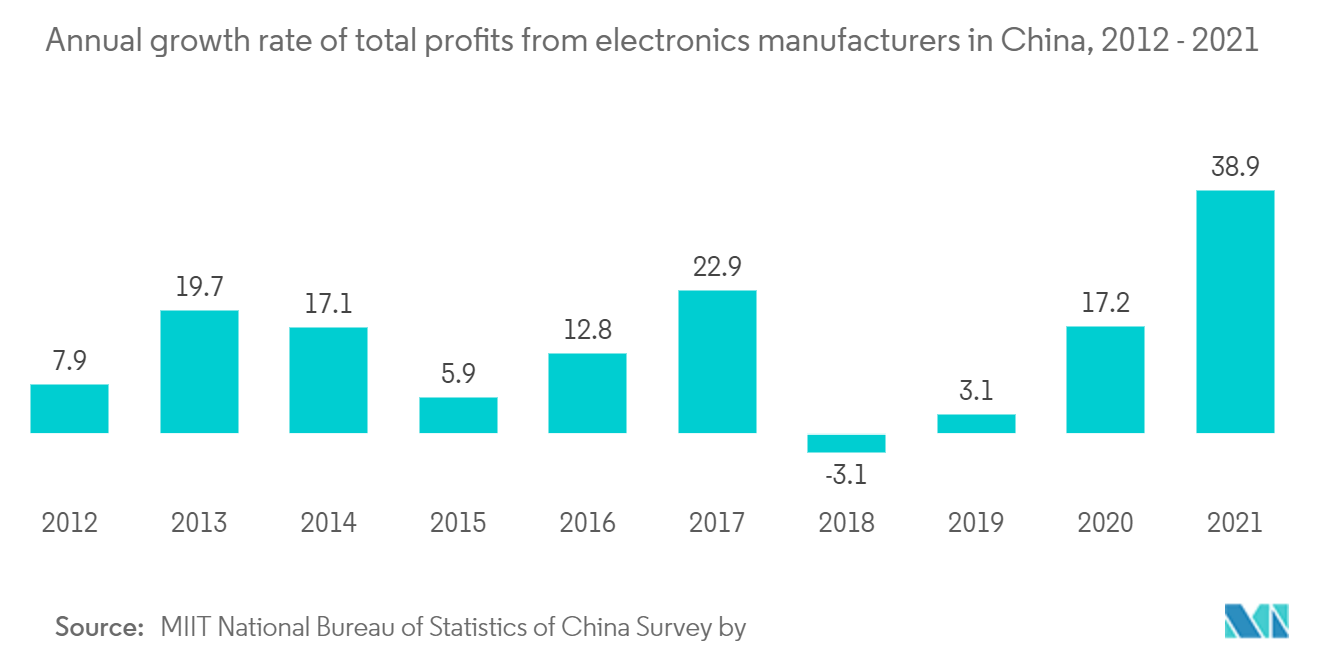Market Trends of China ICT Industry
This section covers the major market trends shaping the China ICT Market according to our research experts:
Increasing Internet Penetration and High Speed Internet will drive the Market
- The internet has had a profound impact on China. Internet-based technologies boost research and development while advancing China's economy and connecting the country's enormous population. Beijing, however, also makes use of the complex communications infrastructure of the nation to stifle political dissent and the right to free speech.
- The internet connection in China is relatively cheaper. The cost of the internet in China decreased significantly over the past few years. According to Numbeo, a basic connection with 60Mbps speed and unlimited data costs no more than USD 12.79 per month. In contrast, customers in the United States can expect to pay USD 68.51 for a similar connection.
- The increasing internet penetration is also a significant factor influencing the ICT market in China. For instance, in December 2021, 93% of internet users in China had access to a broadband connection with a speed of 100Mbps and above, according to the CNNIC (China Internet Network Information Center) and MIIT (Ministry of Industry and Information Technology), China.
- When users visit non-Chinese websites, however, because of the filters and the blocking system, browsing becomes tiresome because of the poor pace. Still, for Chinese websites, most internet connections function relatively well.
- Although there has been a steady progression in rural China's internet infrastructures throughout the past few years, it still lacks behind the National Average. According to CNNIC, the country's rural areas have internet penetration, up to 57.6%, but it is still lower than the national average. The Chinese government has committed more than CNY 140 billion (USD 22.05 billion) to several rural broadband expansion projects since internet penetration in rural China continues to be low.

Government Regulations and Plans to Drive the Market
- China has been focused on growing and expanding its ICT market early. The 10th and 11th Five Year Plans (2001-2010), the central government's blueprint for the country's development, strongly emphasized the ICT sector's importance.
- China's 12th Five Year Plan (2011-2015) emphasized seven major emerging strategic industries, including energy-saving and environmental protection, new-generation information technology, biology, high-end equipment manufacturing, new energy, new materials, and new-energy vehicles, to achieve quality and sustainable growth.
- The focus of the new-generation information technology industry will be on next-generation telecommunication networks, next-generation internet technologies, the internet of things, triple network convergence (telecom, computer, and cable TV networks), cloud computing, integrated circuits, new-generation displays, high-end software, high-end servers, and information services.
- China's national development strategy has made the digital economy a key component. The 14th Five-Year Plan for the Development of the Digital Economy (the "14th FYP") offers a thorough road map and incentives to support the industry. According to the plan, China would advance "important fields" like sensors, quantum information, communications, integrated circuits, and blockchain technology while promoting older ones like 6G. Additionally, it will make it easier to digitally alter the supply chain so that data resources can be used more effectively and the governance of the digital economy can be strengthened.
- Despite much government support, the rising potential labor disruption, hike in wages, privacy infringement, emerging oligopolies, and other financial risks are the major setbacks for government policies to become an actual success. According to the Blue Collar Employment and Compensation Management Report 2021 from China International Intellectech, a human resources firm, nearly 70% of Chinese enterprises experience a labor shortage, and 55% of organizations struggle to locate blue-collar personnel.

